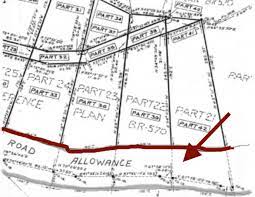
A very substantial error occurred in a real estate transaction. The purchaser was interested in buying a cottage property. As it turned out, the building which she thought she was buying was not really on the lot, although it was closeby.
In 1989, Mrs. Holmes purchased a cottage property on Georgian Bay from Mr. Walker for $170,000. At the time of the purchase, Holmes did not obtain a survey, and neither she nor Walker knew that 95 per cent to 99 per cent of the four-bedroom cottage was located on the road allowance owned by the township.
The actual location of the cottage was discovered when Holmes obtained a survey four years later in 1993.
Holmes then sought to rescind (set aside) the real estate transaction.
An “error in substantialibus” means an error in the very substance of what is sold, an error so fundamental that it goes to the real identity and character of the thing sold. The mistake here was a fundamental mistake about the nature of the thing purchased. Holmes thought she was buying, and Walker thought he was selling, land with a cottage. In fact, land without a cottage was sold.
The matter went on appeal to the Ontario Court of Appeal:
MCMURTRY C.J.O.: — It is incumbent upon the purchaser to satisfy the court that Campbell J. (the Trial Judge) made an error in principle in the exercise of his discretion. We are not so satisfied. It is clear from the reasons of Campbell J. that the key factor in deciding not to grant rescission was the purchaser’s failure to obtain a survey prior to closing. The subsequent events were all directly related to her failure to do so.
Comment
Four years after the deal is closed is too late even if you have “no title” whatsoever to the building. The purchase did receive good title to land nearby. It was just that the property did not have a cottage on it.
The correct choice which could have avoided all the problems in the first place was to obtain a survey of the property.
The time to order one is before the closing.
In many cottage situations, there is no survey available after the building has been constructed. Usually, there is just a survey of the land. The question, of course, is where is the cottage located relative to the lot?
A survey would have shown several matters:
- Lot size,
- Building size,
- Location of building on lot,
- Setbacks from lot lines,
- Easements,
- Encroachments.
These are all matters that would have been helpful to know before closing.
With such an easy and simple remedy available, the purchaser was just out of luck.
Brian Madigan LL.B., Broker
